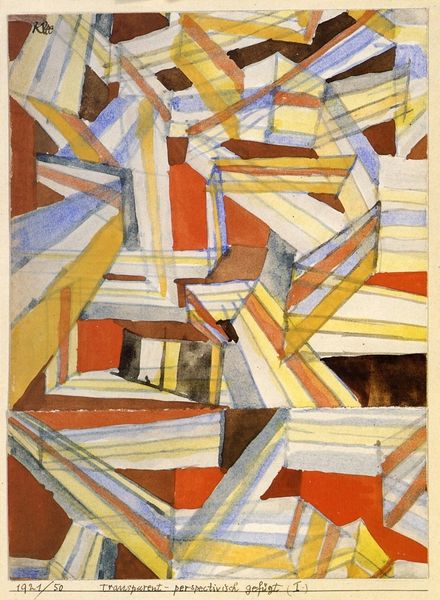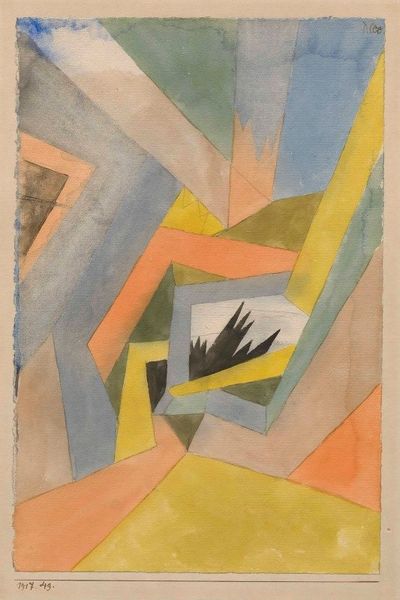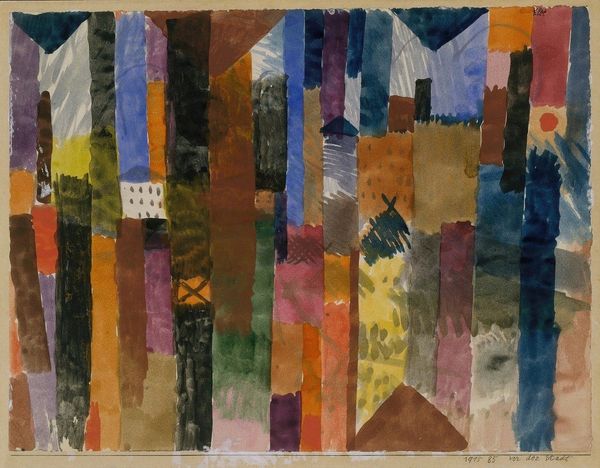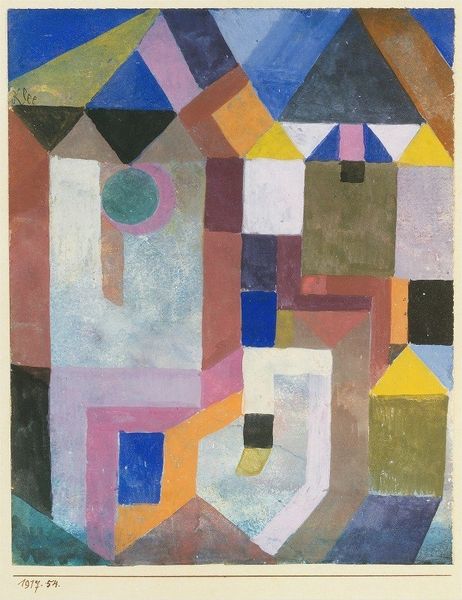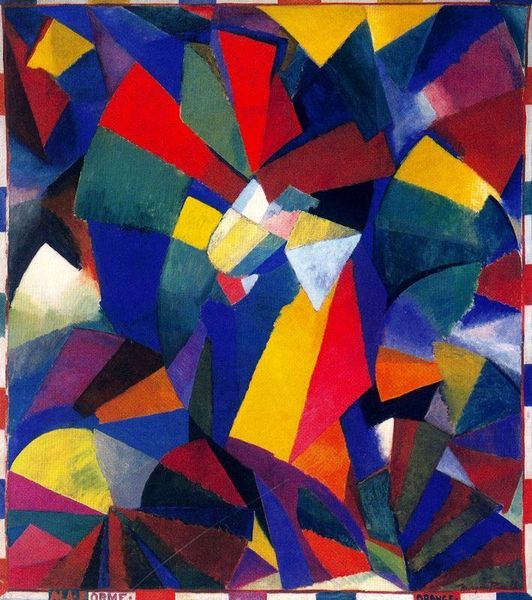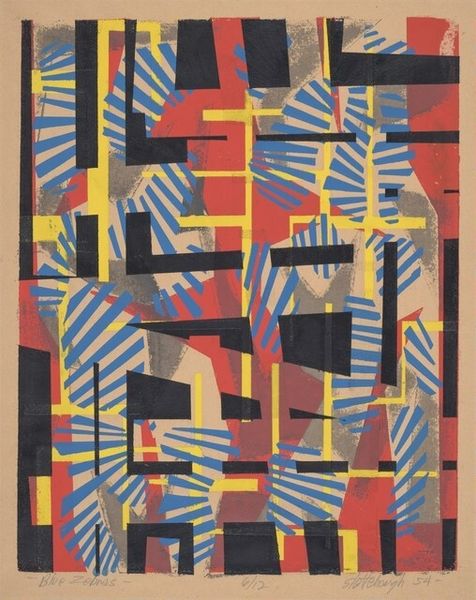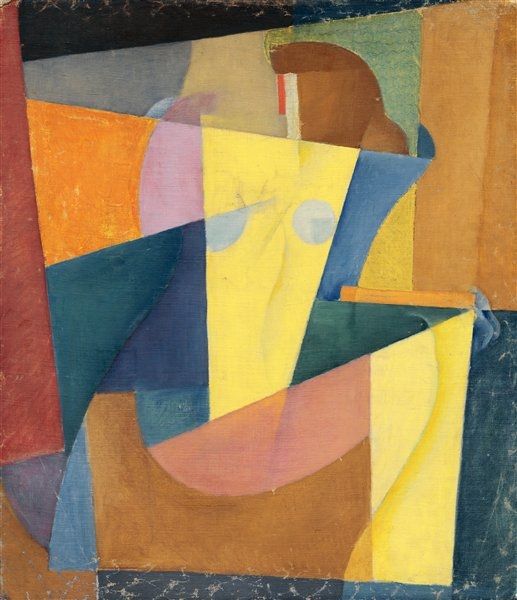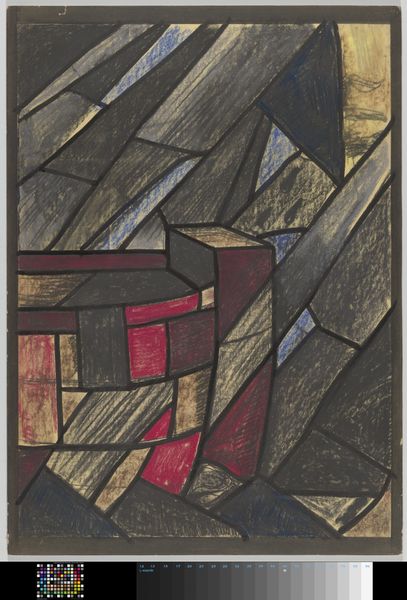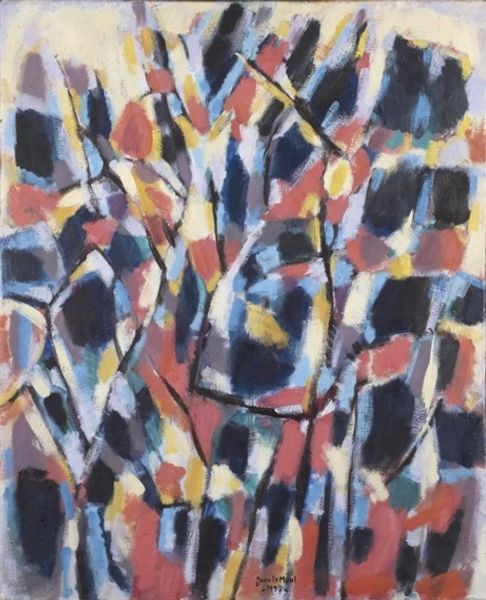
painting, watercolor
#
abstract painting
#
painting
#
watercolor
#
geometric
#
expressionism
#
modernism
#
watercolor
Copyright: Public Domain: Artvee
Curator: Paul Klee created this abstract watercolor painting, "Transparent-perspectivisch gefügt," in 1921. The title translates to "Transparent-Perspectival Structure." What strikes you initially? Editor: Well, it feels almost architectural, doesn't it? Like looking at the fragmented blueprints of a modernist building. The transparent layers give it a light, airy quality, despite the earthy color palette. Curator: The early Bauhaus years profoundly impacted Klee’s focus here, exploring the relationships between line, color, and form within a geometrically structured space. We need to remember Klee was teaching at the Bauhaus during this time. Editor: And what was happening in Germany politically then surely impacted this style? With Germany between wars and with so much political struggle occurring? I cannot help but read a sense of disruption here, or possibly instability into the piece. Curator: Precisely. Many historians have tied Klee’s style to social and political developments. Post-war anxieties created the conditions to question reality and challenge aesthetic conventions. Geometric abstraction became almost like a search for order. Editor: Absolutely, the very act of constructing an alternative order on canvas must have been powerful. And the colors, while muted, seem to evoke an industrial landscape somehow, a subtle hint perhaps at the changing world. Curator: Indeed. Although his work might appear purely formalist at first glance, consider Klee’s context. His engagement with pedagogical theory helped shift art education in radical new directions. The structure can seem brittle to viewers today. Editor: It also inspires such intriguing, varied reflections, and that may be Klee’s true genius. Thanks for illuminating the layered history beneath the transparent surface. Curator: My pleasure. Hopefully, that offers new angles to appreciate Klee’s continuing cultural importance and contribution.
Comments
No comments
Be the first to comment and join the conversation on the ultimate creative platform.
